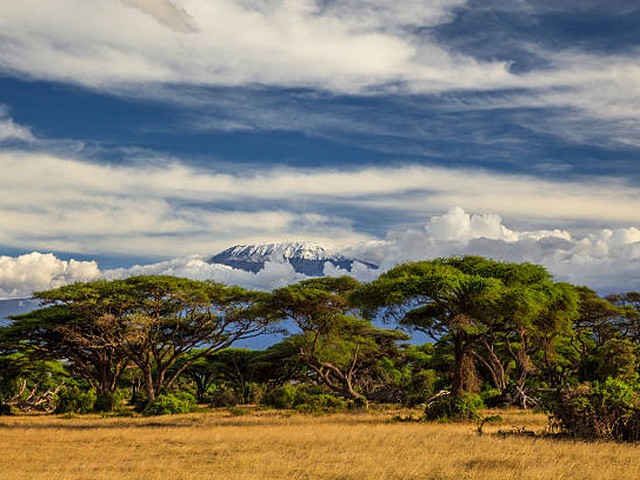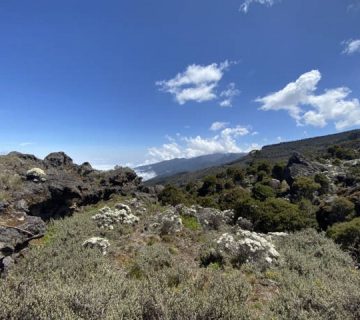How To Keep Warm During Kilimanjaro Summit Push
Standing as the highest peak in Africa, Mount Kilimanjaro is not just a mountain; it’s a monumental journey cloaked in icy winds and breathtaking landscapes. For many adventurers, the summit push – the final, grueling trek to Uhuru Peak – is the climax of their Kilimanjaro experience. However, scaling this majestic giant requires more than just physical stamina; it demands preparation against the biting cold that dominates these zenithal heights. At Kilimanjaro Centre for Trekking and Ecotourism (KCTE), we understand that keeping warm is not just about comfort; it’s about ensuring safety, enhancing performance, and maximizing your chances of a successful summit. Let’s explore how you can conquer the cold and stand triumphantly atop the Roof of Africa!
Preparing for the Summit: Your Thermal Arsenal
Layer Up – The Art of Smart Dressing
When it comes to tackling the freezing temperatures of Kilimanjaro’s summit night, layering is your best strategy. Start with a thermal base layer that hugs your skin but doesn’t constrict. This layer is crucial as it traps body heat and wicks moisture away from your skin. Your second layer should be insulating – think fleece or down vests – which will provide the necessary warmth without adding too much bulk. The final layer, your outer shell, should be windproof and waterproof to shield you against the icy winds and potential precipitation. Remember, the key is to balance warmth and ventilation to prevent sweating, as moisture can lead to a significant loss of body heat.
Choose Wisely: Headgear, Gloves, and Footwear
Over 40% of body heat can be lost through your head, making a good quality beanie or balaclava essential for those cold summit nights. Similarly, invest in a pair of insulated, waterproof gloves and thermal socks. Your extremities are the first to feel the chill, so keeping them warm is critical. Footwear is equally important – insulated, waterproof mountaineering boots with adequate ankle support will make your ascent safer and more comfortable.
Navigating the Night: Techniques and Tips
Keep Moving, Keep Warm
While it’s tempting to take frequent breaks during the strenuous summit push, staying active helps maintain your body temperature. Plan for shorter, more frequent stops to quickly refuel before moving again. This strategy keeps your blood circulating and your muscles engaged.
Fuel Your Summit Push
Your body burns a lot of calories trying to keep warm, so proper nutrition and hydration are key. Hot drinks like tea or broth can provide internal warmth while delivering necessary hydration. Snack on high-energy, easily digestible foods like nuts, chocolate, and dried fruits to keep your energy reserves up.
Breathe Right, Feel Bright
Breathing in cold, high-altitude air can be a challenge. Practice deep breathing techniques to maximize oxygen intake and keep your core temperature regulated. This not only helps in keeping warm but also reduces the risk of altitude sickness.
The Psychological Warmth: Staying Motivated
Embrace the Challenge
The journey to Uhuru Peak is as much a mental challenge as it is a physical one. Keep your morale high by setting small, achievable goals and celebrating them as you progress. Remind yourself of why you started this journey and visualize reaching the summit.
Bond with Your Team
Nothing warms the heart more than shared experiences. The support and encouragement of your fellow trekkers can provide an incredible emotional boost. At KCTE, we foster a spirit of camaraderie and teamwork, ensuring everyone feels motivated and valued throughout the journey.
After the Summit: Warm Down and Revel
Change Into Dry Clothes
Immediately changing into a dry set of clothes after reaching the summit can prevent the chill from setting in as your body cools down. This is also a good time to replenish your energy stores with some warm food and beverages.
Capture the Moment
Taking photos or simply soaking in the panoramic views can be uplifting and heartwarming. Celebrate your achievement with your team, and remember, each photo captures not just a moment but a story of triumph!
Why Climb with Kilimanjaro Centre for Trekking and Ecotourism (KCTE)?
At KCTE, we’re not just about climbing; we’re about creating life-enriching experiences. Our expert guides, comprehensive acclimatization protocols, and high safety standards ensure that every trekker has the best chance to safely and successfully reach the summit. We believe in eco-friendly practices to preserve the pristine beauty of Kilimanjaro for future generations. Ready for an adventure of a lifetime? Book your Kilimanjaro climb with us today!
Frequently Asked Questions
Q1: What is the best time of year to climb Kilimanjaro for optimal weather conditions?
The best times to climb Kilimanjaro are during the dry seasons, from June to October and from December to March.
Q2: How dangerous is the summit push on Kilimanjaro?
While challenging, the summit push is very achievable with proper preparation and guidance. Safety is our top priority, and our skilled guides are equipped to handle various scenarios on the mountain.
Q3: Can altitude sickness affect my ability to stay warm?
Yes, altitude sickness can impair your body’s ability to regulate temperature. Following a proper acclimatization schedule, such as the one KCTE provides, can help mitigate these effects.
As you gear up for your Kilimanjaro adventure, remember that staying warm is crucial to enjoying and conquering the summit push. With the right gear, preparation, and spirit, you’ll not only reach the peak but also enjoy every step along the way. Join us at KCTE and let us guide you to the top!




